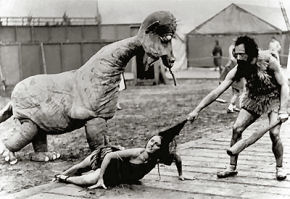29 May 2012
Families forged from female food fanciers
by Will Parker
 A new mathematical simulation shows that the most commonly proposed theories for the emergence of human pair-bonding are not biologically feasible. Instead, the new model suggests the emergence of the modern family was likely initiated by females who showed a preference for low-ranking males who were better at providing food, rather than fighting.
A new mathematical simulation shows that the most commonly proposed theories for the emergence of human pair-bonding are not biologically feasible. Instead, the new model suggests the emergence of the modern family was likely initiated by females who showed a preference for low-ranking males who were better at providing food, rather than fighting.
Author of the new study, Sergey Gavrilets, an associate director for scientific activities at the National Institute for Mathematical and Biological Synthesis and a professor at the University of Tennessee-Knoxville, has published his work in the Proceedings of the National Academy of Sciences. Gavrilets' paper addresses long-standing questions in evolutionary biology about how the modern family - characterized by intense, social attachments with exclusive mates - emerged following earlier times of promiscuity.
Gavrilets' work shows that the transition to pair-bonding can occur when female choice and faithfulness, among other factors, are modeled. The result is an increased emphasis on provisioning females over male competition for mating.
"The effect is most pronounced in low-ranked males who have a low chance of winning a mate in competition with a high-ranked male," he explained. Thus, the low-ranked male attempts to buy mating by providing for the female, which in turn is then reinforced by females who show preference for the low-ranked, "provisioning" male.
This female preference for food over fighting-prowess led to what Gavrilets says was the first sexual revolution. "Once the process was underway, it led to a kind of self-domestication, resulting in a group-living species of provisioning males and faithful females."
Related:
Discuss this article in our forum
First human communities may have originated from funeral feasts
Earliest cave art was erotica, say researchers
Bashed-in prehistoric skull hints at the invention of violence
Two legs good, four legs bad - for beating the crap out of each other
Source: National Institute for Mathematical and Biological Synthesis
